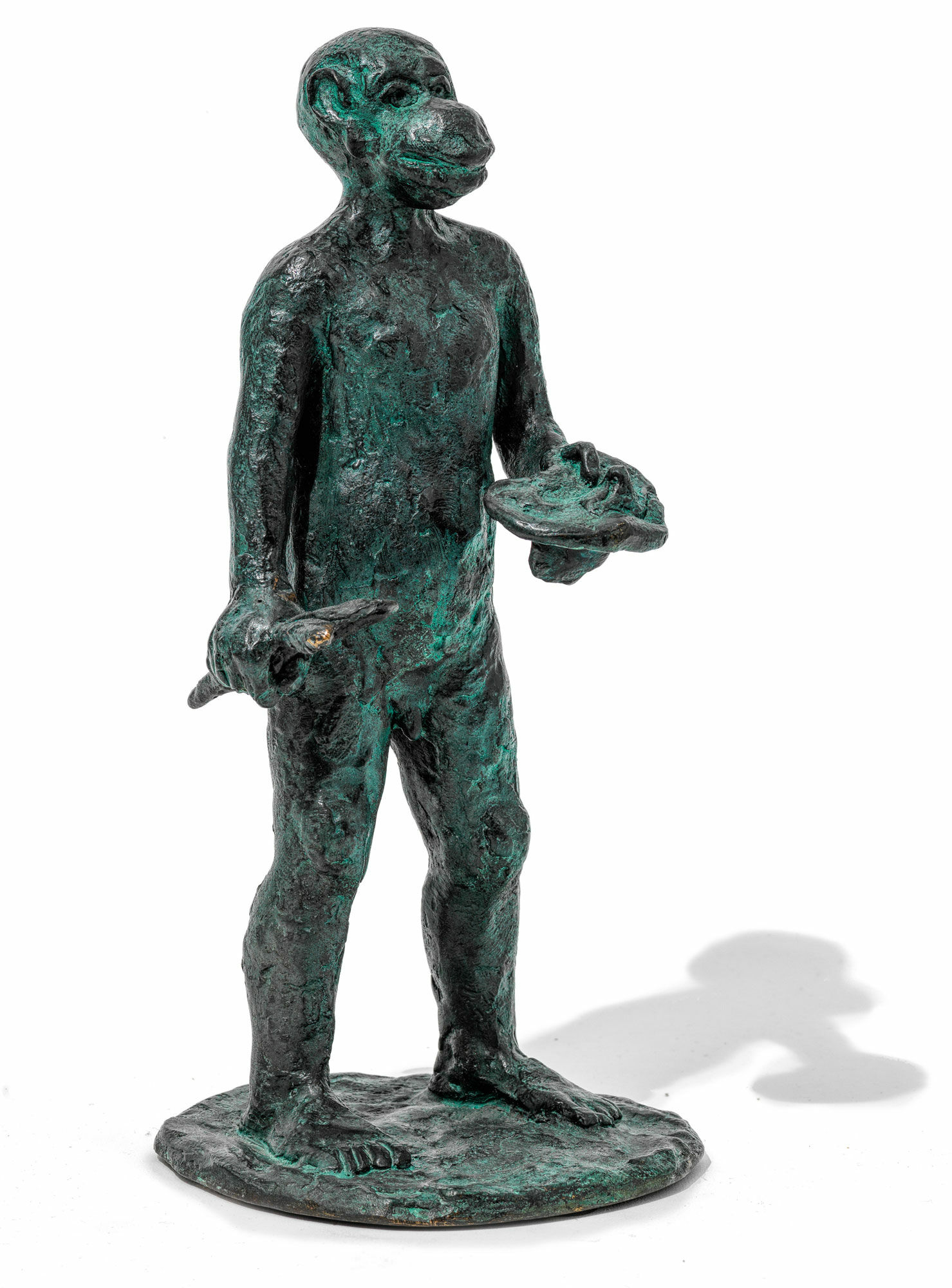Sculpture "Painters' Tribe" (2002), bronze
Sculpture "Painters' Tribe" (2002), bronze
Quick info
limited, 9 copies | numbered | signed | bronze | height 32 cm
Detailed description
Sculpture "Painters' Tribe" (2002), bronze
Bronze sculpture, 2002. Edition: 9 copies, numbered and stamped. Height: 32 cm
About Jörg Immendorff
1945-2007, German painter, graphic artist, sculptor
Jörg Immendorff, born in Bleckede, Germany, is one of the most important contemporary German artists with worldwide recognition.
In the 1970s he developed an emphatically object-related visual language with symbolic, art-historical and political allusions. "Every picture by Immendorff is a critical representation of a cultural-political situation," writes Lorand Hegyi about the artist. His pictures are today exhibited in the world’s most important museums.
Through his friendship with the painter A.R. Penck, who was still living in East Germany in 1976, the painter and sculptor Jörg Immendorff developed a history painting that reflects and critically examines the theme of German division. This year he began the series of sixteen large-format paintings "Café Deutschland". In this series, his striking and stylistically pluralistic painting style found expression in an inspiring way.
Immendorff's political ambitions already emerged during his training at the Düsseldorf Academy. One of his teachers was Josef Beuys, with whom he worked closely.
Immendorff founded the LIDL Academy and used LIDL as a pseudonym, which represented politically oriented art. He understood his politically engaged paintings as art that served the nation and the working people. He is the utopian among painters: "I am the only painter in the history of art who worked on a utopia that then became concrete" (German Reunification).
His sculptural style is characterised by an expressiveness comparable to that of the artists' community "Die Brücke". And again through his sculptures historical and social issues are forcefully traced.
His paintings and sculptures are presented to the interested art public in extensive exhibitions of important museums.
An alloy of copper with other metals (especially with tin) used since ancient times.
When casting bronze, the artist usually applies the lost-wax technique which is dating back more than 5000 years. It's the best, but also the most complex method of producing sculptures.
First, the artist forms a model of his sculpture. It is embedded in a liquid silicone rubber mass. Once the material has solidified, the model is cut out. The liquid wax is poured into the negative mould. After cooling down, the wax cast is removed from the mould, provided with sprues and dipped into ceramic mass. The ceramic mass is hardened in a kiln, whereby the wax flows out (lost mould).
Now we finally have the negative form, into which the 1400° C hot molten bronze is poured. After the bronze had cooled down, the ceramic shell is broken off and the sculpture is revealed.
Now the sprues are removed, the surfaces are polished, patinated and numbered by the artist himself or, to his specifications, by a specialist. Thus, each casting becomes an original work.
For lower-quality bronze castings, the sand casting method is often used which, however, does not achieve the results of a more complex lost-wax technique in terms of surface characteristics and quality.
A plastic work of sculptural art made of wood, stone, ivory, bronze or other metals.
While sculptures from wood, ivory or stone are made directly from the block of material, in bronze casting a working model is prepared at first. Usually, it is made of clay or other easily mouldable materials.
The prime time of sculpture after the Greek and Roman antiquity was the Renaissance. Impressionism gave a new impulse to the sculptural arts. Contemporary artists such as Jorg Immendorf, Andora, and Markus Lupertz also enriched sculptures with outstanding works.


